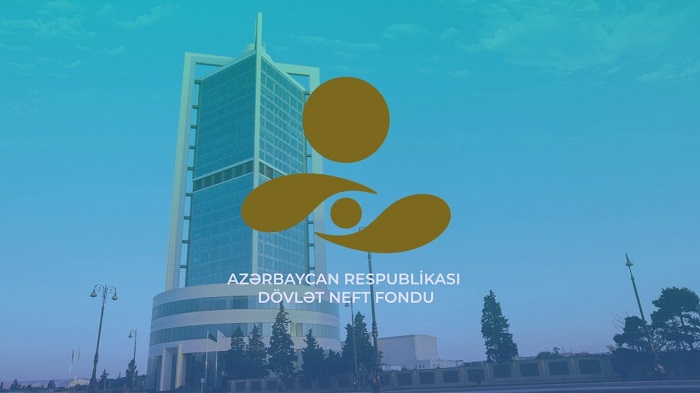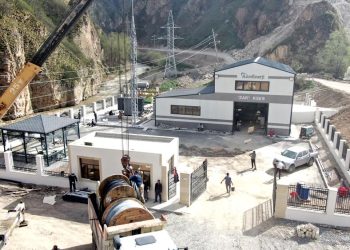The Southern Gas Corridor is a stupendously expensive project, even though its costs have come down as a result of falling commodity prices, notably steel.
 For Azerbaijan, it’s of crucial importance, since it constitutes a massive source of potential export revenues from the sale of both natural gas and of condensate, with 6bn m³/yr going to Turkey from the end of 2018 and 10bn m³/yr to countries beyond, from early 2020, and with almost as much income to be generated from condensate produced alongside the gas, which can then be exported via the existing Baku-Tbilisi-Ceyhan oil pipeline.
For Azerbaijan, it’s of crucial importance, since it constitutes a massive source of potential export revenues from the sale of both natural gas and of condensate, with 6bn m³/yr going to Turkey from the end of 2018 and 10bn m³/yr to countries beyond, from early 2020, and with almost as much income to be generated from condensate produced alongside the gas, which can then be exported via the existing Baku-Tbilisi-Ceyhan oil pipeline.
But how will the Azerbaijani share of this venture be financed? Much of the answer can be found in a presentation given by the Azerbaijani energy analyst, Gulmira Rzayeva, to the Natural Resources Forum in London June 28.
Azerbaijan’s state energy company Socar has major stakes in all elements of the Southern Gas Corridor, which was originally costed at around $45bn but which, according to Azerbaijan’s energy minister Natiq Aliev, is now expected to cost $39.1bn.
Just how much Socar will have to raise to finance its share is still not totally clear. Rzayeva, who is now working with the Oxford Institute for Energy Studies (OIES) on regional energy issues in the Caspian and Black Sea area, said that Azerbaijan’s total share of the SGC projects amounted to $12.1bn, a figure in line with the original cost estimates for the entire set of SGC projects of around $44bn – $45bn (see table).
Azerbaijan’s share of the Southern Gas Corridor ($bn)
| Total | Costs | Socar | Original Socar | Costs | |
| Original | Revised | Stake | Stake * | Revised | |
| Estimate | Estimate | Socar Stake | |||
| (Dec 2013) | (June 2016) | (%) | (June 2016) | ||
| Upstream SD2 | 23 | 18.9 | 16.67% | 3.83 | 3.15 |
| (26 wells offhsore) | (6) | ||||
| (Offshore facilities) | (15) | ||||
| (Sangachal onshore terminal) | (2) | ||||
| SCP | 5 | 4.9 | 16.67% | 0.83 | 0.82 |
| Tanap | 11 – 12 | 9.3 | 58% | 6.38 – 6.96 | 5.28 |
| Tap | 5 | 6.0 | 20% | 1 | 1.2 |
| Total: | c.44-45 | 39.1 | c.12.04- 12.62 | 10.45 |
Source: NGE
*Socar’s shares in all the major projects have changed significantly since 2013. The original Socar stake computation reflects current shareholding and pre-2016 estimated project costs.
However, she only provided data concerning some $11.3bn worth of past and future financing, a level which might reflect reduced cost estimates. During the Caspian Oil & Gas Conference on June 2, Aliev declared: “Under current conditions, Phase 2 of Shah Deniz Project is estimated at $23.8bn, including expansion of the South Caucasus Pipeline ($4.9bn). The cost of construction of Trans-Anatolian Gas Pipeline (Tanap) is now valued at $9.3bn, the construction of the Trans-Adriatic Pipeline (TAP) at $6bn.”
With Socar holding a 16.7% stake in SD2, a 58% stake in Tanap and a 20% stake in TAP, this would imply a total obligation for Socar of some $10.45bn. According to Rzayeva, Socar has already secured some $4.2bn in funding for its share of the various projects, with $2.3bn coming in the form of bonds issued by the State Oil Fund of Azerbaijan (Sofaz), which has been accumulating funds during the oil boom years for investment in the country’s economic development and as a safeguard in times when hydrocarbons revenues are not so good. A further $1.7bn in equity funds from the government has also been secured.
Rzayeva said that Socar, through borrowing by the specially formed SGC company, in which the government has a 51% stake and Socar the remaining 49%, is now looking to take on fresh debt of $7.7bn. This would take its total debt obligations in respect of the SGC projects to $11.3bn. Rzayeva said that so far Socar had already spent some $2.1bn on SGC-related projects. The bulk of this will almost certainly have gone on the upstream side, namely the development of SD2, for which contracts worth around $12bn have been signed since the project received its final investment decision in December 2013.
Rzayeva did not discuss in detail the energy ministry’s direct $1.7bn stake in the SGC company. While this reduces the borrowing requirement, most if not all of it would have to come from Sofaz, so, in effect it amounts to a further element of Sofaz financing of the project. But Sofaz’s finances, Rzayeva said, are healthy, with the fund holding some $33.4bn – enough to provide a useful cushion at a time of volatile energy prices.
Moreover, she said, Baku is working hard both to diversify the economy from its reliance on hydrocarbons and to keep public spending under control. In 2014, the non-hydrocarbon economy grew by 6.9% – just a fraction under the targeted 7% growth – and this year the aim is to secure a further 9% growth in this sector. The national budget has been amended, with the oil revenues, a major component, priced in at just $25/barrel, instead of the previous $50/b assumption. Unless the continuing rise of oil prices above $25/b boosts government income (which it might well), this will leave the budget in deficit, with spending expected to total AZN18.5bn ($11.97bn) against income of $16.8bn.
Moreover, since Sofaz is already expected to help fund this year’s spending to the tune of AZN 7.6bn, any deficit will either have to be covered by government borrowing or by further drawdowns from funds held by Sofaz. However, Rzayeva noted that in 2015, Azerbaijan wound up with a current account surplus of 0.4% whilst inflation was running at just 4% a year. Moreover, the country’s annual growth has averaged 3.2% a year over the last five years.
Rzayeva was bullish concerning the speed with which Azerbaijan might be able to generate additional income from the SGC. The initial 16bn m³/yr of gas for Turkey and other European countries will all come from SD2). But she considered that as early as 2021-22 there might be an additional 5bn m³/yr of gas available for input into the SGC system from the Absheron field, whose development is being discussed with the field’s operator, Total.
She also cited work by the OIES, which considers that a further 5-7bn m³/yr could come from Umid, a field being developed by Socar itself, in 2026-7 and that some 4-6bn m³/yr from the deep level under the Azeri-Chirag-Guneshli oilfield would be available from around 2027-28. However, she also noted that one scenario for Umid called for the field to start significant export-oriented production as early as 2022.
From 2030-2035, Rzayeva said, an additional 15bn m³/yr might also be brought on stream from a combination of expansion programmes at existing fields and the development of new fields. Overall, however, she cautioned that “ramp up of development depends on securing gas sales contracts with suitable gas markets, availability of drilling rigs, and commerciality of the projects.”
_f500x293_1467244329.jpg)
By coincidence, Socar itself furnished further details of its expenditures June 28, with a presentation in Baku in which it said that $12bn of the roughly $24bn planned for SD2 group expenditure – which includes spending on both the SD2 upstream and the expansion of the South Caucasus Pipeline across Azerbaijan and Georgia – had reached $12bn. Socar also said that with regard to Tanap, some $2.09bn had been invested so far out of a total expected investment of $9.2bn. This $9.2bn figure is slightly lower than the $9.3 bn figure cited by Aliev at the Caspian oil and gas conference on 2 June, but this may well be simply a result of rounding up or rounding down the latest estimate.
Of potentially greater significance is a report by the Azerbaijani ABC news agency June 24 which, in reporting an official announcement that the TAP pipeline from the Turkey-Greece border to Italy (and which constitutes the last stage of the SGC pipeline complex), would include €2.3bn ($2.55bn) in investment for Greece, put the total cost of the TAP line at €6.2bn ($6.86 bn). Aliev on 2 June had put the cost at $6bn. TAP itself has never published any cost estimates for the line. But with all these figures, one point should be borne in mind. As Aliev told reporters in Baku on 2 June: “Re-assessments on the planned expenditures are being carried out on a regular basis.”
John Roberts, Chief Analyst
Natural Gas Europe











